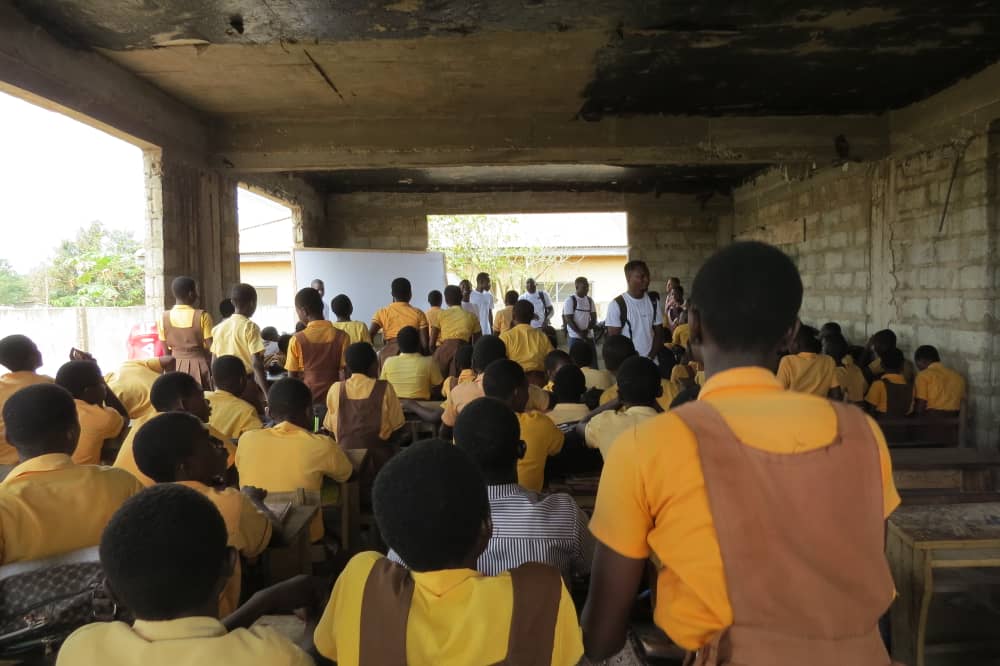The inability to attain national peace and sustainability contributes to the collective challenge of striving to reach global prosperity. War, conflict and climate-related problems have taken a considerable toll on development across individual nations, impeding progress and setting countries back by decades. These, in turn, have caused ripple effects including hunger, poverty, loss of lives and property, poor governance, among others.
In the wake of the COVID-19 pandemic, world issues of concern may seem more cumbersome to address, however, the United Nations (UN) believes that as the earth heals, we should be inspired to think creatively and collectively about recovery for all, how to build resilience and how the world can be transformed into a more just, equitable, inclusive, and sustainable place.
These ideas are what the Sustainable Development Goals (SDGs) seek to fulfil. Across countries, it has been observed that the nature of work is changing, and particularly in the midst of a pandemic, employment conditions have transformed even further, requiring more virtual than physical interaction. Automation related job losses are issues that have dominated various discourses, causing anxiety around the globe. While there are fears about the negative impact of technology on employment opportunities, there is also hope that advancement in Science, Technology, Engineering, and Mathematics (STEM) will bring about an era in human civilization where development is no longer a problem, with peace dominating all nations. (UN, 2021)
The COVID-19 pandemic is known to have hit underprivileged and marginalized groups the hardest. It is worse to find that people caught in conflict nations are significantly more vulnerable due to lack of access to healthcare. The International Day of Peace was observed worldwide on the 21st of September in support of global harmony where the UN emphasized the need for a green and sustainable global economy that produces jobs, reduces emissions, and builds resilience to climate impact – a statement that buttresses the point that, innovation in STEM remains a basis for building a better world.
Addressing the need for STEM Education, a UC Berkeley Professor of Physics, Hitoshi Murayama, stated, “I also believe that the quest for knowledge and the fascination with the mysteries of the universe would be the key to development. The fascination with stars, planets and outer space, gets children excited about learning more about science. If we nurture their curiosity properly, it leads to a more educated and scientifically minded population. To raise the standard of living requires scientific knowledge to all people.”
Studies and research in Climate Change Science, Mathematical Modeling, and Analysis, among others, are also essential in making valuable permutations and predictions to manage climate unbalance as well as make threat expositions that can potentially derail conflict and war. This is proof that STEM Education can offer to people who are traumatized by war effects. “You can give them skills that will not only help and benefit them but will benefit the community. I like the thought that survivors of trauma can themselves become peacebuilders. I was amazed because not only do they recover, they can now turn their pain into passion, build their community and prevent further conflict,” – Winifred Ereyi (ThinkSTEM Foundation).
What better way to provide empowerment to nations and individuals than through STEM Education?
The African Institute for Mathematical Sciences (AIMS) is a pan-African network that supports the STEM Agenda. Providing a STEM education based approach to peace and prosperity is not only possible but also vital if we are to raise a community of world leaders prepared to develop solutions that ensure more significant equity and safety for all. The Universal Declaration of Human Rights (art. 27) recalls that everyone has a right to participate in and benefit from science. This has served as a spark for global discussions on improving access to science as well as outlining its benefits for sustainable development. It is thus evident that opportunities in (STEM) may construct a better age for nations that would be proactive enough to make STEM an asset.
Unbiased and broader reach for more people to engage in STEM education is an issue of concern. This is essential in supporting global prosperity goals, thus preventing conflict that may emanate from poor inclusion or lack of representation, i.e., gender, race, etc.
Through various initiatives across Centres in South Africa, Ghana, Senegal, Rwanda, and Cameroon, AIMS is able to sponsor education and training in various STEM-related fields with a keen interest in the Mathematical Sciences. Conflict in Africa has had a long and eventful history with multiple wars and education through STEM support can be used as a tool to mitigate such chaotic activities. Additionally, findings prove that the gender gap between women and men in STEM continues to be quite significant; thus, correcting gender segregation in academia, employment and entrepreneurship could increase aggregate productivity globally while reducing gender-related conflict. The AIMS Model provides collective action to ensuring high-quality STEM education and equal access to working in the STEM field. This is necessary in order to have a massive boost in prosperity on a global scale.
STEM indeed has the potential to transform our world systems and economy, from a place of crisis to one of peace and sustainability with solutions for the countless concerns of this era.
References
Raup A., (2018), Can STEM Education Help Promote Peace & Prosperity? STEM Advocacy
Sanders R., (2014), Science for peace and development today and tomorrow, UC Berkeley Media relations
United Nations, (2021) International Day of Peace – Global Peace
Wakhaya Sichangi M., (2017), Centre for Mathematics Science and Technology Education in Africa – Global Partnership Education

